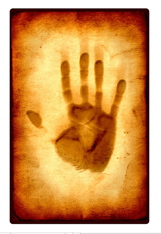Hi friends..
So now that all of you have read the tips on how to approach the reasoning questions let us try and do one simple example.
This example is of medium level and in the final exam the level of questions will be higher so be prepared and do the critical reasoning part practice thouroughly and carefully as this part is the one in which students most often make elementary mistakes due to time constraints and other pressures.
Example question
Some of our federal legislators are opposed to government endowments or other financial support for photography as an art form on the basis that much of modern photography portrays nudity and is thus obscene. These legislators are mistaken, however, since even they would agree that Michelangelo’s works of art, most of which depict nudity, are not obscene.
Which of the following statements, if true, would most seriously weaken the argument above?
- The artistic level of the works of the vast majority of modern photographers does not approach that of Michelangelo's works.
- Many modern photographic works of art have been displayed in museums alongside Michelangelo's works.
- The majority of Michelangelo's work was not funded or otherwise supported by the government.
- What these legislators consider to be obscene does not coincide with what the general citizenry views as obscene.
- The works of Michelangelo that portray nudity are considered not obscene due to their relatively high artistic value.
The author of the passage attempts to refute the legislators' argument by reasoning essentially as follows:
Premise: Michelangelo's works portray nudity.
Premise: Michelangelo's works are not considered obscene.
Intermediate Conclusion: A work of art that portrays nudity is not necessarily obscene.
Final Conclusion: The legislators are mistaken about why they should not provide funding for photographic art that portrays nudity.
The first answer choice (we'll call it "A") is the second-best answer among the five choices. (A) Suggests a possible explanation why modern photographers' works portraying nudity might be considered obscene while Michelangelo's works portraying nudity would not. But a better response would go further—to explain how artistic value affects whether an artwork is considered obscene. Thus, while (A) tends to weaken the argument, you should look for another answer choice that refutes the argument's unstated assumption more directly.
The second answer choice (we'll call it "B") actually strengthens (supports) the argument, rather than weakening it. (B) Provides some evidence, albeit weak, that Michelangelo's works are relevantly similar to those of modern photographers.
The third answer choice (we'll call it "C") is irrelevant to the argument, which relies on a logical connection between nudity and obscenity, not on any logical connection between federal funding and obscenity
The fourth answer choice (we'll call it "D")fails to provide enough information to either weaken or support the argument. More specifically, (D) does not indicate how the general citizenry's view as to what is obscene compares with that of the legislators. Without this information, (D) accomplishes nothing toward either weakening or supporting the argument.
The fifth answer choice (we'll call it "E")is the best one. (E) directly refutes the unstated assumption that Michelangelo's works and those of modern photographers are similar in all respects relevant to the argument—by stating explicitly that Michelangelo's works are considered not obscene because of their relatively high artistic value.

0 Comments:
Post a Comment